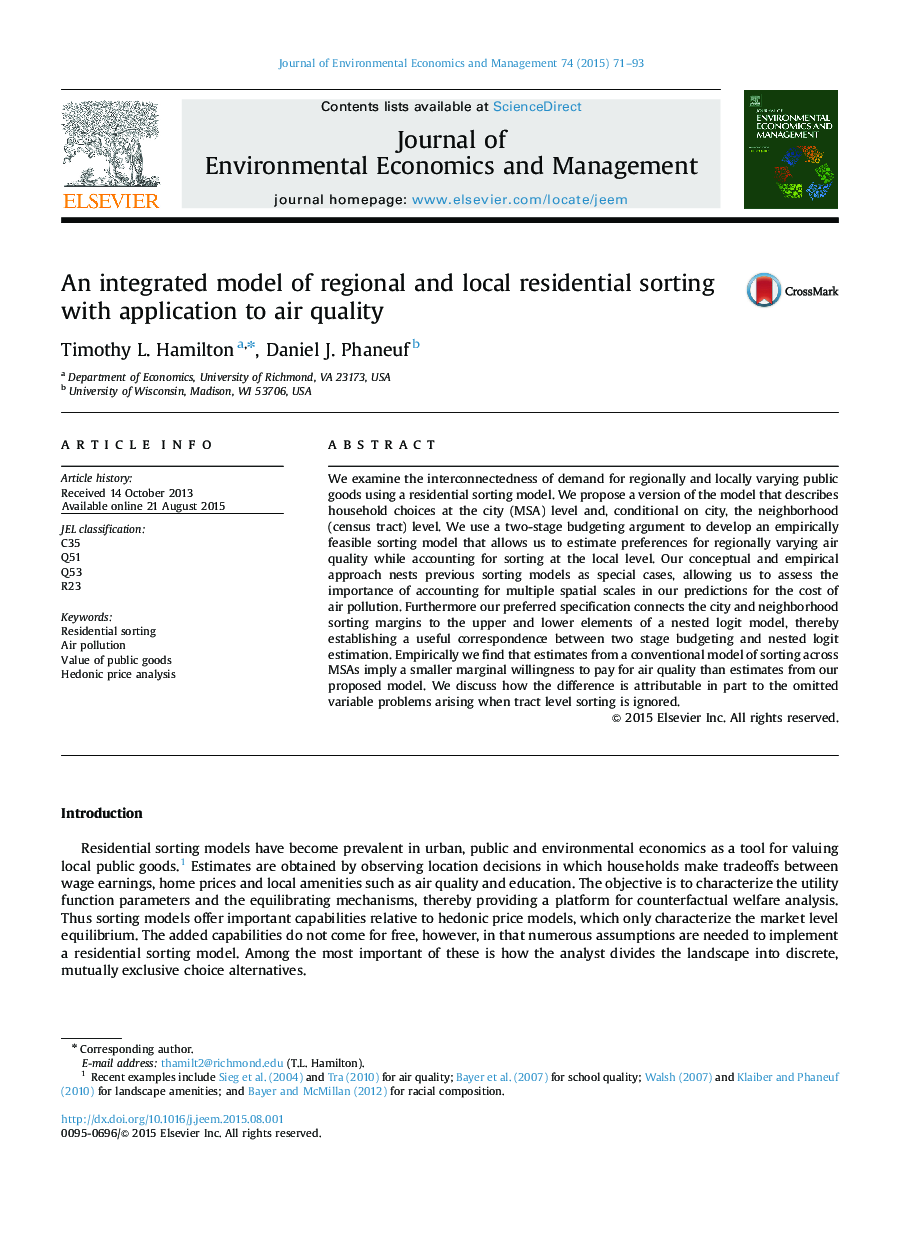| Article ID | Journal | Published Year | Pages | File Type |
|---|---|---|---|---|
| 958808 | Journal of Environmental Economics and Management | 2015 | 23 Pages |
We examine the interconnectedness of demand for regionally and locally varying public goods using a residential sorting model. We propose a version of the model that describes household choices at the city (MSA) level and, conditional on city, the neighborhood (census tract) level. We use a two-stage budgeting argument to develop an empirically feasible sorting model that allows us to estimate preferences for regionally varying air quality while accounting for sorting at the local level. Our conceptual and empirical approach nests previous sorting models as special cases, allowing us to assess the importance of accounting for multiple spatial scales in our predictions for the cost of air pollution. Furthermore our preferred specification connects the city and neighborhood sorting margins to the upper and lower elements of a nested logit model, thereby establishing a useful correspondence between two stage budgeting and nested logit estimation. Empirically we find that estimates from a conventional model of sorting across MSAs imply a smaller marginal willingness to pay for air quality than estimates from our proposed model. We discuss how the difference is attributable in part to the omitted variable problems arising when tract level sorting is ignored.
